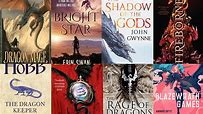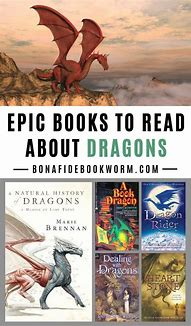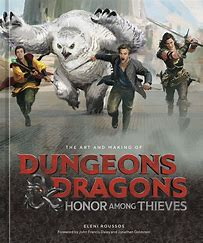Content Menu
● Introduction
● The Origins of How to Train Your Dragon
● Transitioning from Book to Film
● Character Design: Bringing Hiccup and Toothless to Life
>> Hiccup Horrendous Haddock III
>> Toothless
● Concept Art: Visualizing Berk and Beyond
>> Environments
>> Dragons
● The Role of Animation in Storytelling
>> Fluid Motion
>> Emotional Expression
● The Impact of Art on Audience Reception
>> Critical Acclaim
>> Lasting Legacy
● Conclusion
● Related Questions
>> 1. What inspired Cressida Cowell to write "How To Train Your Dragon"?
>> 2. How does animation enhance storytelling in films like "How To Train Your Dragon"?
>> 3. What themes are prevalent in "How To Train Your Dragon"?
>> 4. How did DreamWorks Animation approach adapting Cowell's book into a film?
>> 5. Why is concept art important in animation?
Introduction
The world of "How to Train Your Dragon" has captivated audiences through both literature and film, blending adventure, friendship, and the fantastical elements of dragons and Vikings. At the heart of this enchanting universe lies the artistry that brings these characters and their stories to life. The art associated with "How to Train Your Dragon" is not merely a backdrop; it is a vital component that enhances the narrative and immerses viewers in its richly imagined world. This article explores the artistic journey behind "How to Train Your Dragon", delving into its character designs, concept art, and the creative processes that shaped this beloved franchise.

The Origins of How to Train Your Dragon
"How to Train Your Dragon" began as a children's book series written by Cressida Cowell. The first book was published in 2003 and introduced readers to Hiccup Horrendous Haddock III, a young Viking who struggles to fit in with his tribe. Unlike his peers, Hiccup is not a typical warrior; he is thoughtful, inventive, and compassionate—traits that set him apart in a culture that values strength and bravery above all else.
The story's central theme revolves around Hiccup's relationship with dragons, particularly Toothless, a Night Fury dragon he befriends. This friendship challenges the long-standing enmity between Vikings and dragons, ultimately leading to a transformation in both characters. The narrative's charm lies in its exploration of acceptance, understanding, and the bond between humans and creatures often deemed fearsome.
Transitioning from Book to Film
The transition from Cowell's books to the animated film produced by DreamWorks Animation was a significant undertaking. The filmmakers aimed to retain the essence of Cowell's story while expanding it into a visually stunning cinematic experience. This required extensive collaboration among writers, animators, and artists who would breathe life into the characters and settings.
One of the key aspects of this transition was the development of concept art. Concept artists played a crucial role in visualizing the world of Berk, the Viking village where Hiccup lives. They created preliminary sketches that captured the essence of the characters, their environments, and the dragons themselves. This early artwork served as a foundation for the film's aesthetic direction.
Character Design: Bringing Hiccup and Toothless to Life
Character design is an essential element of animation that influences how audiences perceive characters emotionally. For "How to Train Your Dragon", designers faced the challenge of creating relatable yet fantastical characters.
Hiccup Horrendous Haddock III
Hiccup's design reflects his unique personality traits. He is depicted as scrawny and awkward compared to his muscular Viking peers. His messy hair and mismatched clothing signify his nonconformity within Viking culture. These design choices effectively communicate his character's internal struggle between wanting to be accepted by his father and tribe while remaining true to himself.
Toothless
Toothless, on the other hand, embodies both ferocity and vulnerability. His sleek black scales contrast sharply with Hiccup's appearance, emphasizing their differences yet highlighting their bond. The design team focused on giving Toothless expressive features—large eyes that convey emotion and subtle movements that reflect his personality. This attention to detail allows audiences to connect with Toothless on an emotional level.

Concept Art: Visualizing Berk and Beyond
The concept art for "How to Train Your Dragon" plays a pivotal role in establishing the film's visual identity. Artists created detailed illustrations of Berk's landscapes, from its rugged cliffs to its lush forests. These images not only served as inspiration for animators but also helped set the mood for various scenes throughout the film.
Environments
Berk is depicted as a harsh yet beautiful island characterized by its rocky terrain and unpredictable weather. Concept artists used color palettes that reflected the island's mood—stormy blues during moments of conflict contrasted with warm hues during scenes of camaraderie between Hiccup and Toothless. These choices enhance storytelling by visually reinforcing emotional beats within the narrative.
Dragons
Each dragon species in "How to Train Your Dragon" has its own distinct design elements that reflect its characteristics. For instance, the Monstrous Nightmare features vibrant colors and intimidating spikes, while the gentle giant Gronckle has a rounder shape with softer features. These designs help convey each dragon's personality traits while contributing to world-building within the film.
The Role of Animation in Storytelling
Animation breathes life into static artwork, transforming concept sketches into dynamic sequences that engage viewers emotionally. The animators' task was not only to replicate the designs but also to imbue them with movement that reflects their personalities.
Fluid Motion
Animating Hiccup's awkwardness required careful attention to body language; his movements are often hesitant or clumsy, contrasting sharply with other Vikings' confident strides. In contrast, Toothless's flight sequences were designed for fluidity and grace, showcasing his agility as he soars through the skies alongside Hiccup.
Emotional Expression
Facial expressions play a crucial role in conveying emotions within animated films. Animators meticulously crafted Hiccup's reactions—his wide-eyed wonder during moments of discovery or his furrowed brow when facing challenges—allowing audiences to empathize with him deeply.
The Impact of Art on Audience Reception
The art behind "How to Train Your Dragon" significantly impacts how audiences receive both the characters and their journeys. Visually striking designs can evoke emotions even before dialogue is spoken; viewers are drawn into Hiccup's world through vivid imagery that captures their imaginations.
Critical Acclaim
Upon release, "How to Train Your Dragon" received widespread acclaim not only for its storytelling but also for its stunning visuals. Critics praised how effectively animation conveyed complex themes such as friendship, bravery, and acceptance—elements that resonate universally across age groups.
Lasting Legacy
The success of "How to Train Your Dragon" led to sequels and spin-offs within various media formats—each continuing to explore themes established in Cowell's original works while expanding upon them visually through innovative animation techniques.
Conclusion
The artistry behind "How to Train Your Dragon" is integral to its success as both a literary series and an animated film franchise. From character design to concept art, every artistic decision contributes significantly towards creating an immersive experience for audiences worldwide. As viewers follow Hiccup's journey alongside Toothless—from awkward beginnings filled with self-doubt towards triumphs built on friendship—they are reminded of essential values such as acceptance and understanding amidst differences.
Through its rich visual storytelling combined with heartfelt narratives rooted in friendship between humans and dragons alike," How To Train Your Dragon" continues captivating hearts across generations—a testament not only to Cressida Cowell's storytelling prowess but also those talented artists who brought her world alive through their incredible artwork.

Related Questions
1. What inspired Cressida Cowell to write "How To Train Your Dragon"?
Cressida Cowell drew inspiration from her childhood experiences growing up on an island where she imagined adventures involving dragons and Vikings.
2. How does animation enhance storytelling in films like "How To Train Your Dragon"?
Animation allows for dynamic visual expression that can convey emotions through movement, color choices, and character designs—enhancing audience engagement with narratives.
3. What themes are prevalent in "How To Train Your Dragon"?
Key themes include friendship, acceptance, bravery against adversity, understanding differences among cultures (Vikings vs Dragons), personal growth through self-discovery.
4. How did DreamWorks Animation approach adapting Cowell's book into a film?
DreamWorks collaborated closely with Cowell while expanding upon her original story through additional character arcs while retaining core messages about compassion towards misunderstood creatures like dragons.
5. Why is concept art important in animation?
Concept art serves as foundational visual guides for animators—helping establish character designs/environments while influencing overall aesthetic direction throughout production phases.































